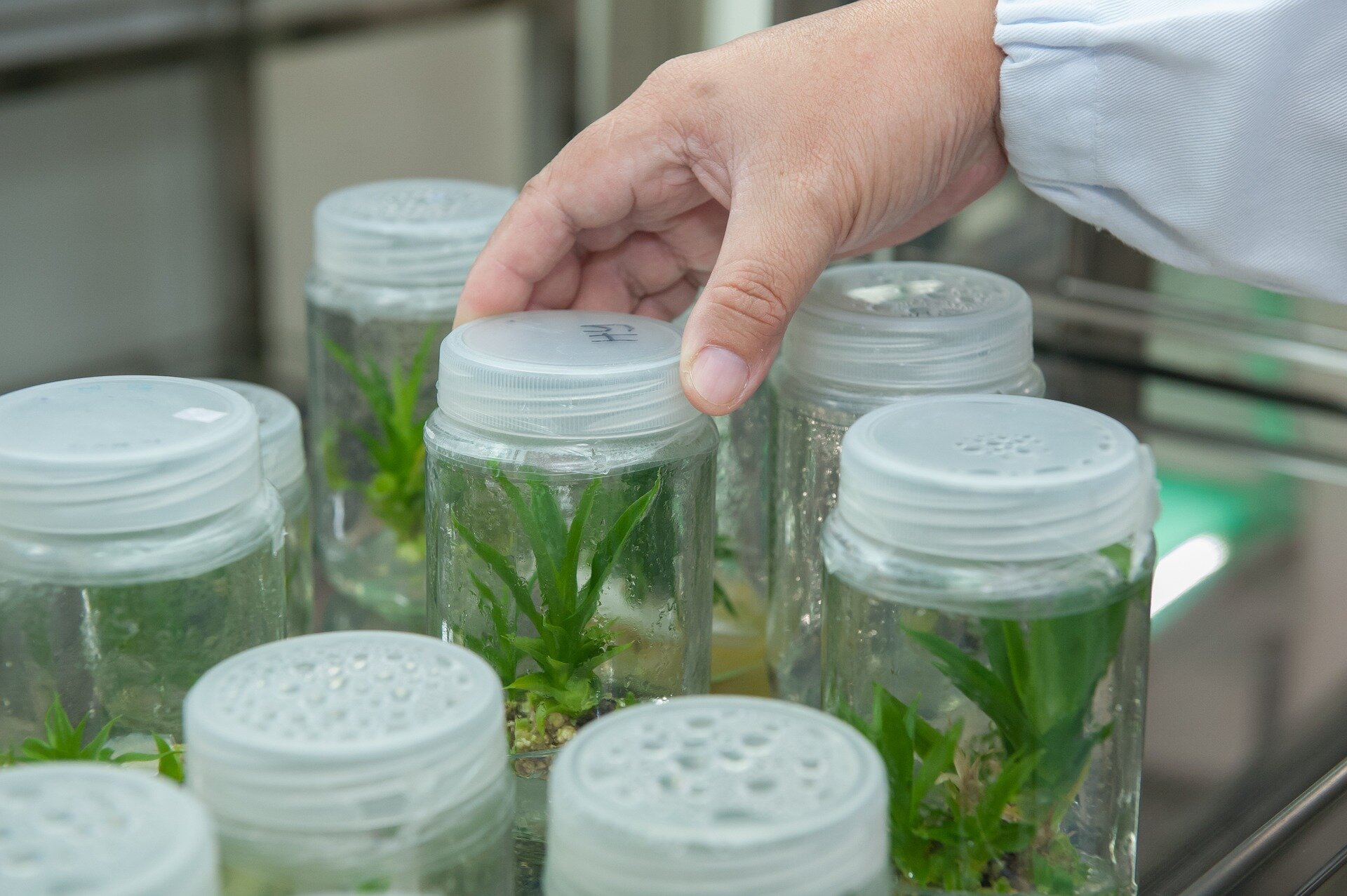Plants are very much different to us, yet we share many things with them including our planet. The similarities between plants and us doesn’t end here; our cells also have many things in common. Both plant and animal cells have numerous specialist cellular compartments that perform a particular function. Like all things alive, DNA codes are the same in animals and plants. Intriguingly, we’re also somewhat genetically similar to plants – our DNA is approximately 60% similar to a banana.
If plants and animals are so alike genetically, then why are we so different? The answer is complex, but it’s worth remembering that we still have 40% genetic different and a large evolutionary gap. Plants have a rigid cell wall fixing the cells in one position, so they’re not able to rearrange, and that plants are unable to move. Although there are some non-photosynthetic, parasitic plants, most are autotrophic, meaning they make their own food, so plants don’t need to move around in search of prey.
A more astonishing difference between plants and animals is how much influence the external environment has on each organism’s genes. For example, two genetically identically animals will grow up to look alike. Animals will always look similar no matter where they are born. For example, a healthy human will have two arms, two legs, two eyes, a nose, etc. You get the idea – but, in stark contrast, plants can look vastly different depending on their external conditions. Even genetically identical plants can look drastically different with just a slight change in their growth environment.
Plant shape and size can tell us a lot about their surroundings. All of us have seen that trees lose their leaves and expose bare branches in the winter. Come spring and summer the tree completely transforms itself and makes leaves, flowers and fruits. And plants make these in huge quantity – a mature oak tree has over two hundred thousand leaves. They make all these they need to carry out a lot of photosynthesis, meaning they must absorb as much sunlight as possible. So, if a tree is in an open space, then it may expand its branches outwards to soak more sunlight. If the tree is in the middle of the forest, then it’ll invest its resources to grow a taller stem to access the sunlight. Alternatively, if two trees are close to each other, then they may grow skewed towards one direction, away from the shade of the other tree.

One hormone to rule them all
The angles, patterns of branches together with the size and leaf shapes determines the physical structures of a plant, which can be referred as plant architecture. A lot of us identify plant species through their distinct branch architecture, leaves shapes, flowers and fruits. When it comes to the plant architecture, it would be wrong to focus solely on shoots. Plants also have a completely different architecture system that lies underground: the root system architecture. For centuries, plant breeders have been using the knowledge of shoot and root architecture to select for plant varieties that yield more produce.

Insight into plant architecture is an important factor in agriculture. The top of the central stem (shoot apex) of many plants, but not all, dominates other stems on the side constraining their growth. Therefore, the shoot apex rises the highest causing the plant to grow tall vertically – a phenomenon known as the apical dominance. Decapitating the top of the central stem removes the effects of apical dominance, so the side stems grow more and the plant becomes bushier. We can use this knowledge to manipulate tree branching and number of flowers to grow more fruits or produce a higher number of seeds. Scientists identified several decades ago that the plant hormone auxin produced in the shoot apex causes apical dominance.
The plant hormone auxin is a small molecule that is instrumental in virtually every stage of the plant’s growth and development. Auxin shapes the plant’s organs to give them their characteristic shapes. It’s the reason why plants recognise gravity so that the stem always grow upwards, away from the gravity and the root grows into the ground, towards the gravity. My own research has shown how a small molecule TENin1 disrupts the intricate distribution of auxin inside plant organs causing plants to lose gravity perception.
More recently, scientists have uncovered the role of auxin in controlling the angles of branches and side roots in plants. Auxin fights against the downwards gravitational pull to fix the angles of side roots and branches giving the plant its basic shape. Understanding the role of auxin is already a major topic in plant sciences. Not only will auxin research help us identify new ways to increase crop production, but insights into auxin’s role in plant development will also help us grow plants in the microgravity of space. This will no doubt help us in deep space exploration and perhaps even settle in another planet one day. Back down to the Earth, understanding plant architecture will help us produce more food and the way to do that is invest more in plant sciences.



Leave a Reply